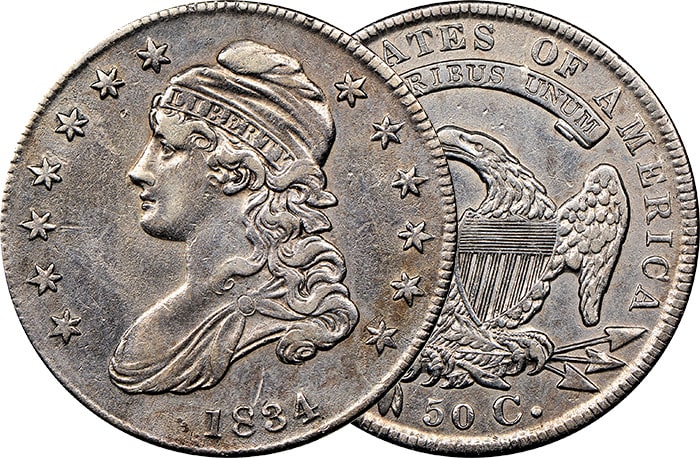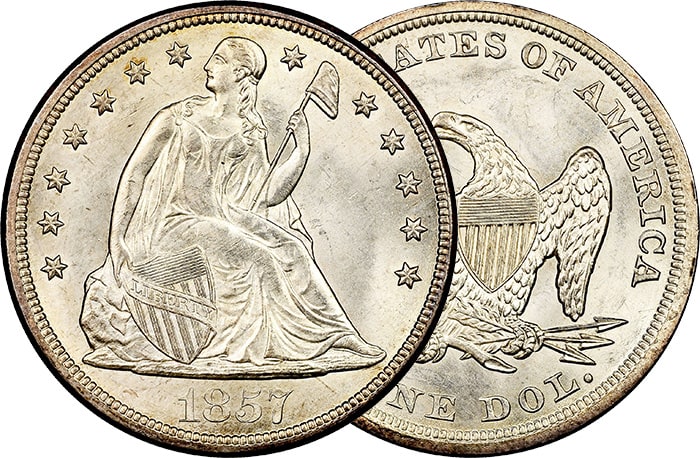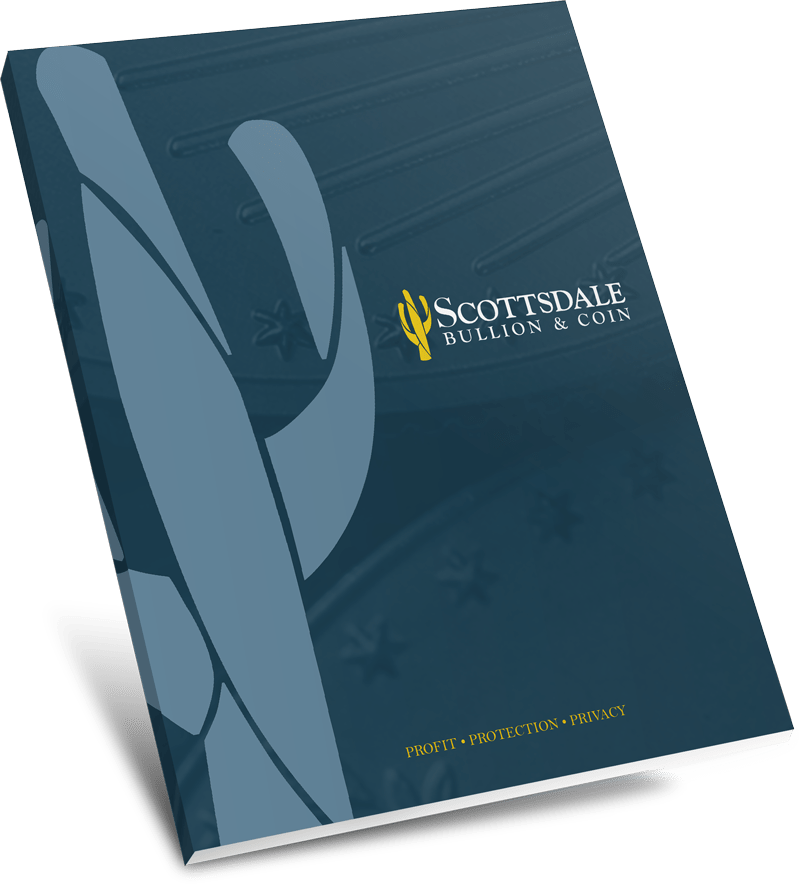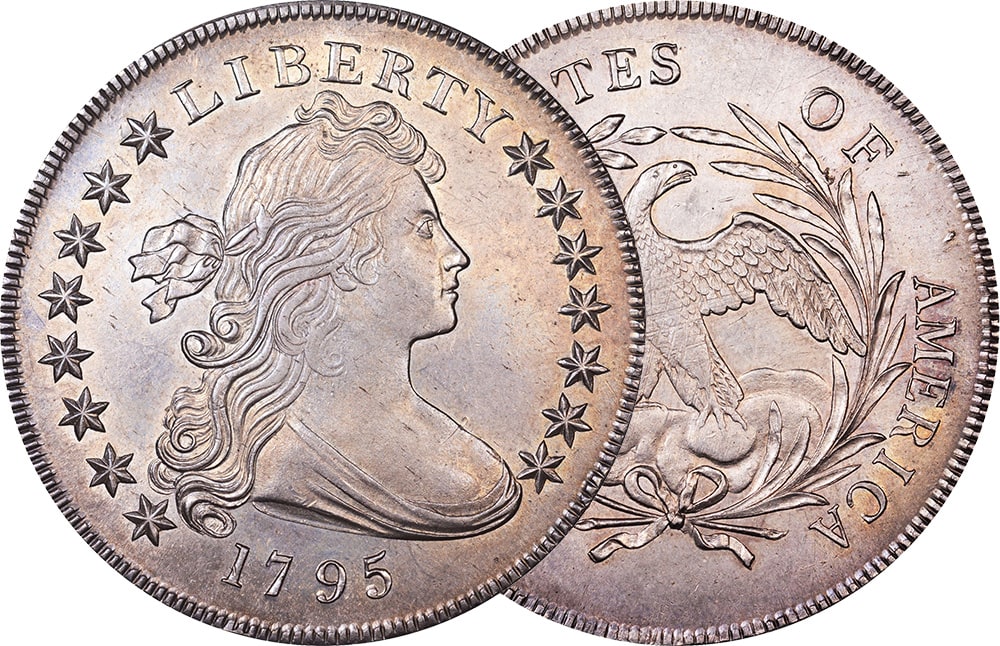
Draped Bust Dollar
Looking to sell this coin? Get cash today! Request free appraisal.
| Purity | .892 Silver |
| Finish | Circulated & Proof |
| Edge | Lettered |
Looking to sell this coin? Get cash today! Request free appraisal.
Why Buy from Scottsdale Bullion & Coin
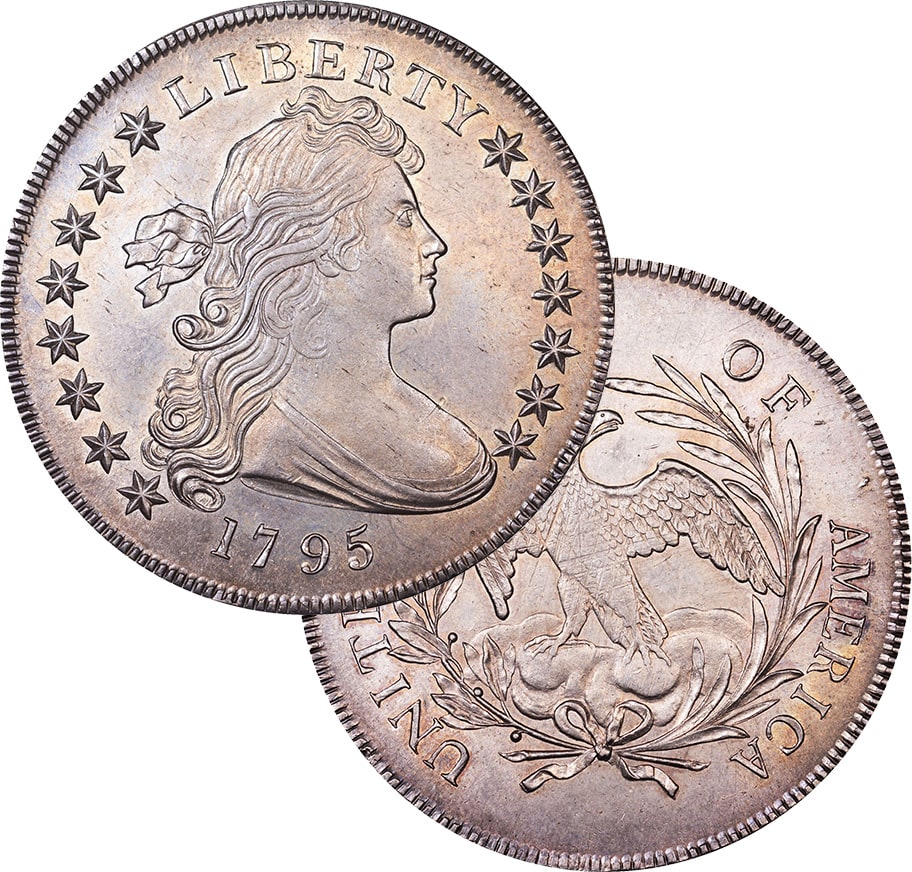
About the Draped Bust Dollar
The Draped Bust Dollar is an early US silver dollar coin initially minted from 1795 to 1803 until the production of silver coinage was halted as silver supplies waned. At the time, the Mint Director ordered the silver fineness reduced to 0.892 – down from the legal standard of 0.900 – due to worsening silver shortages. This iconic American dollar saw temporary reproduction in the mid-19th century but with an 1804 mint date, resulting from a series of historical anomalies.
How to Buy The Draped Bust Dollar Coins
Since Draped Bust Coins are rare, inventory is scarce. It is important to talk to an advisor. Give us a call, use our live chat function, or request a quote directly from our website.
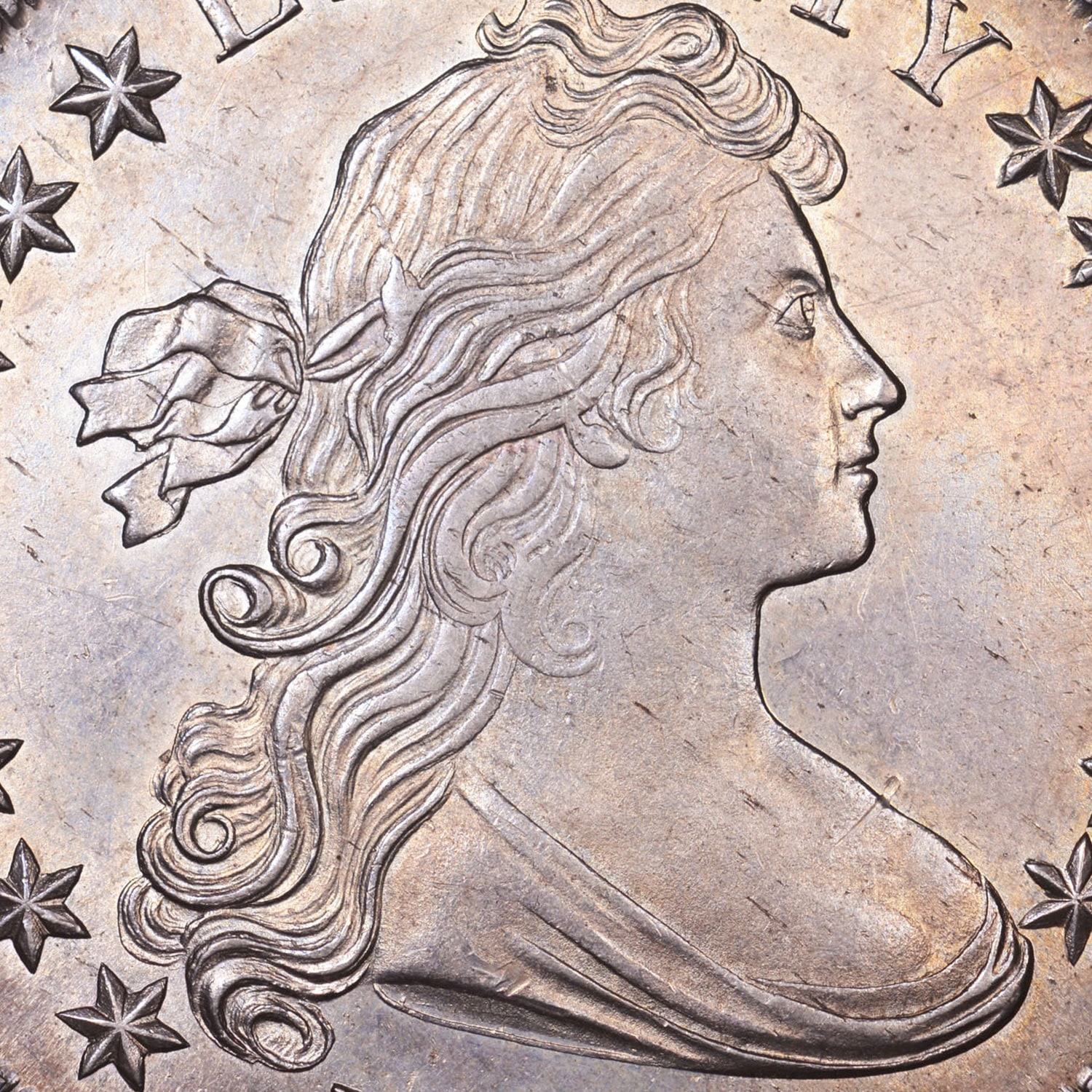
Why Invest in the Draped Bust Dollar
Ideal for long-term investments
Historical significance and scarcity
Highly sought-after and rarely traded in the market
Wondering if the advantages of owning a Draped Bust Dollar fit your investment goals? Schedule a free strategy session with a committed precious metals advisor to determine if this classic American coin aligns with your investment strategy.
Draped Bust Dollar Design
Obverse Side
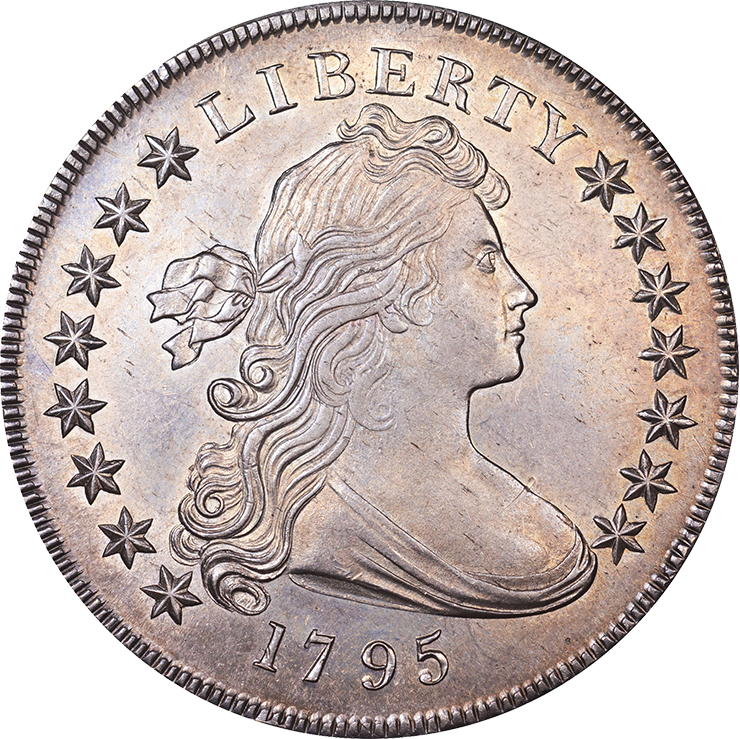
The obverse of the Draped Bust Dollar features a regal bust of Lady Liberty with flowing locks, widely believed to have been modeled after Philadelphia socialite Ann Willing Bingham. The inscription LIBERTY sits slightly offset atop the image with the date appearing opposite toward the bottom. Initial renderings of the Draped Bust Dollar feature eight stars to the left of Lady Liberty and seven to the right, although there are alternative versions with 13 or 16 stars.1
Reverse Side
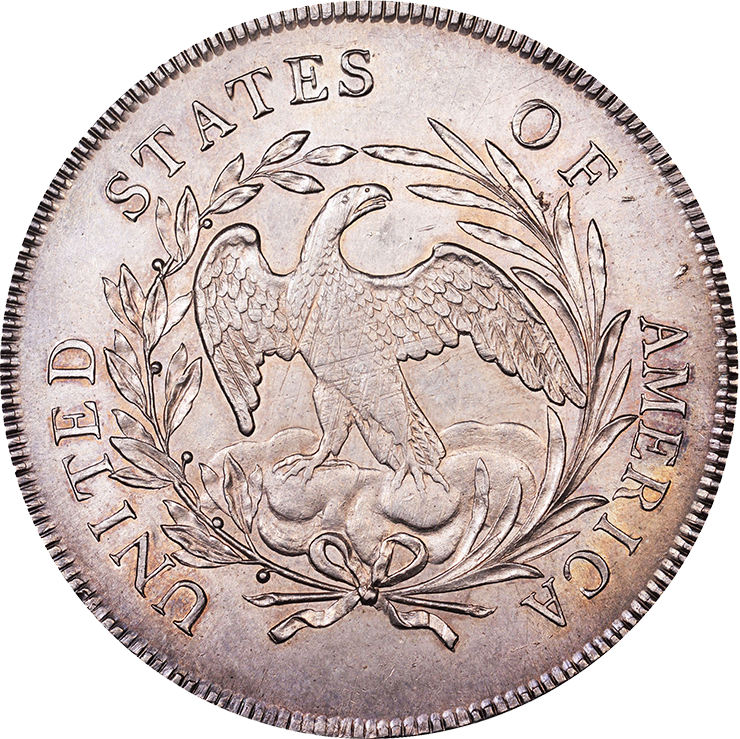
There are two designs for the reverse side of the Draped Bust Dollar, commonly called the small and large eagle versions. The original design was a slight variation of the preceding Flowing Hair Dollar which features a bald eagle with wings spread surrounded by a wreath. UNITED STATES OF AMERICA encircles the entire image.
In 1798, this small eagle design was replaced with a larger heraldic eagle clenching arrows and an olive branch in each of its talons. A shield covers the front of the eagle and 13 stars sit above, representing the original colonies. There’s a banner with the country’s motto E PLURIBUS UNUM held within the eagle’s beak.
The 1804 Draped Bust Dollar Restrikes

Class III (After 1857)
Theodore Eckfeldt is also responsible for the Class III Draped Bust Dollars which were produced after 1857. Only six of these versions survive today. This final iteration only differs from Class II in the lettering on the edge. It’s believed that Class III coins were struck around the same time as Class II, with the modified edges added soon after.
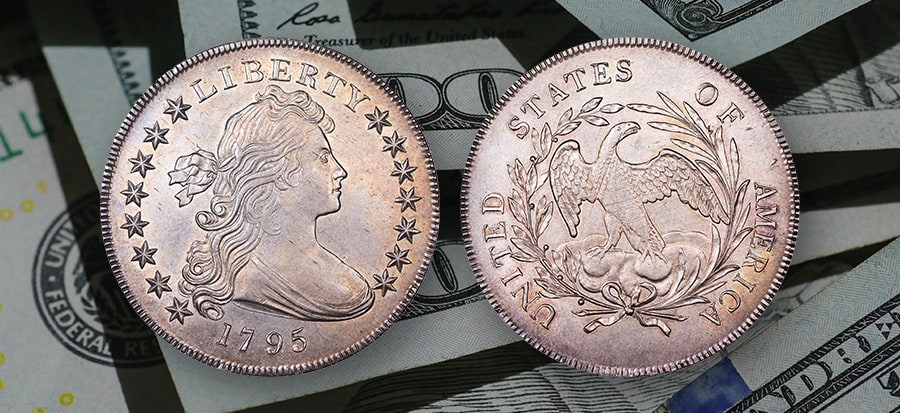
Draped Bust Dollar Value
Draped Bust Dollars are highly valuable because of their historical significance, impressive scarcity, and popular demand. Due to the age of this coinage, condition also plays an important role in determining its value. Older versions tend to fetch higher prices, although there are certainly exceptions to this rule.
On the low end, the small and large eagle versions of this iconic coin have sold for more than $2,300 and $1,000,3 respectively. However, some of the most valuable Draped Bust Dollars have gone for just shy of $1 million at auctions. No matter your budget or investment goals, you should be able to find a value point that suits your needs.
The inherent value and consistent demand of the Draped Bust Dollar make it an excellent investment for financial security, high liquidity, and long-term stability.

